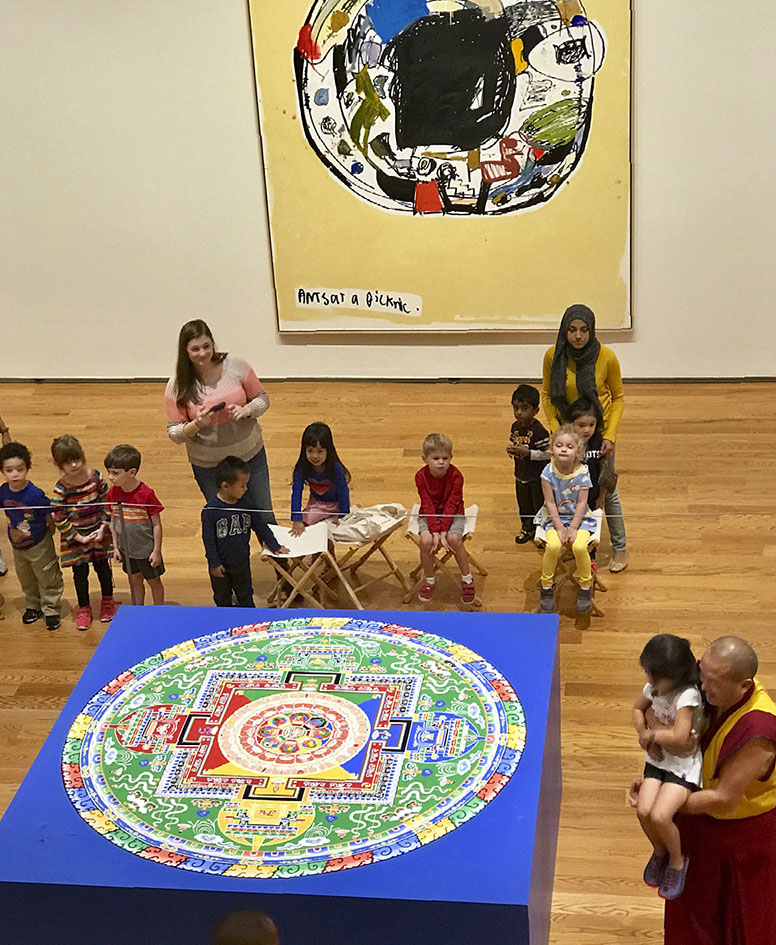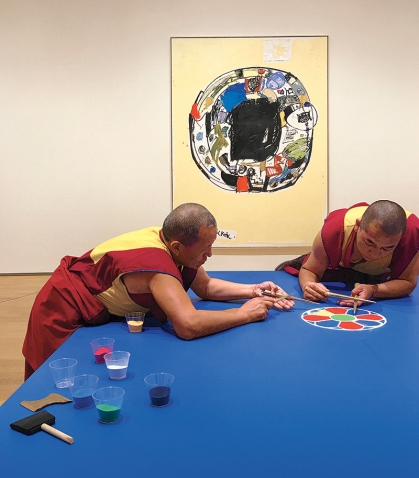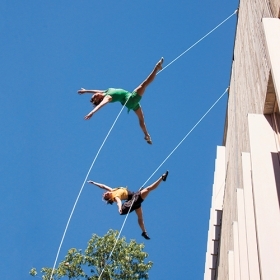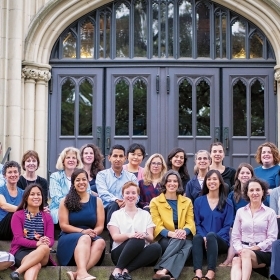A hush pervaded one of the Davis Museum galleries as two Tibetan monks slowly etched a sand mandala pattern onto a blue cloth ground. The only sound in the room was the scritch-scritch of the metal cones the monks employed to direct grains of Himalayan sand, dyed in bright colors, into an intricate circular design.
The traditional pattern of the Mandala of the Medicine Buddha they created, handed down through many generations of monks, was re-created from memory. The monks, Lobsang Choegyal and Tenzin Choesang, visited Wellesley from the Namgyal Monastery Institute of Buddhist Studies in Ithaca, N.Y. They spent eight weeks last fall constructing the 6-by-6-foot image. Their timeless piece stood in contrast to, yet in conversation with, a show of modern mandala paintings, Eddie Martinez: Ants at a Picknic, which hung on the surrounding walls.
“We are happy to come here,” said Choesang. “The mandala is a prayer. We have many problems in this world. Our world holds so many different colors; we need all people in this world to be together, depend on each other, care for each other.”
The monks began their painstaking work by placing sand in the center and slowly work-ing outward in concentric circles, constructing symbolic images a few grains at a time. Choesang said that by offering their artwork to the College, “We want to bring the blessings of the Buddha to people.”
John Bailes, the College’s Buddhist chaplain, explained that the mandala’s imagery represents the “enlightened mind, the aspiration of the medicine Buddha. It represents healing, letting go of the poisons of greed, hate, and delusion, and healing ourselves and healing the world.”
The final step in the traditional mandala process is dissolution—a somber ceremony that begins with removing tiny pinches of sand while chanting prayers, and proceeds to sweeping away each grain in the design, obliterating the image. On Oct. 11, 2017, the swept-up sand was gathered in a glass jar and carried in procession to Lake Waban, where it was released into the water, reminding observers of the transitory nature of all things—even art.

You can watch a time-lapse video of the creation and dissolution of the Mandala of the Medicine Buddha at www.wellesley.edu/davismuseum/mandala.








We ask that those who engage in Wellesley magazine's online community act with honesty, integrity, and respect. (Remember the honor code, alums?) We reserve the right to remove comments by impersonators or comments that are not civil and relevant to the subject at hand. By posting here, you are permitting Wellesley magazine to edit and republish your comment in all media. Please remember that all posts are public.